
How to Use MP1584 power regulator: Examples, Pinouts, and Specs
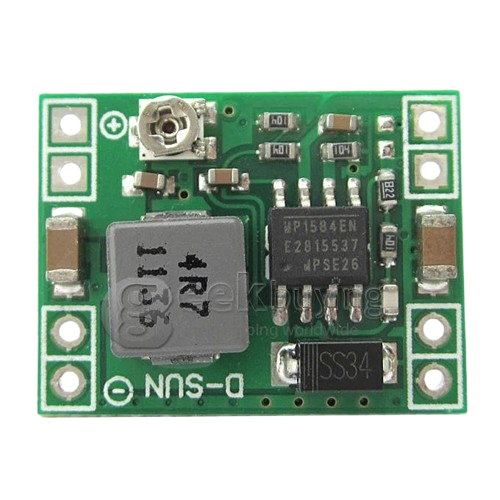
 Design with MP1584 power regulator in Cirkit Designer
Design with MP1584 power regulator in Cirkit DesignerIntroduction
The MP1584 is a step-down (buck) voltage regulator designed to efficiently convert a higher input voltage to a lower output voltage. It is compact, highly efficient, and versatile, making it suitable for a wide range of applications. The MP1584 features an adjustable output voltage, a wide input voltage range, and built-in protection mechanisms such as overcurrent protection and thermal shutdown.
Explore Projects Built with MP1584 power regulator
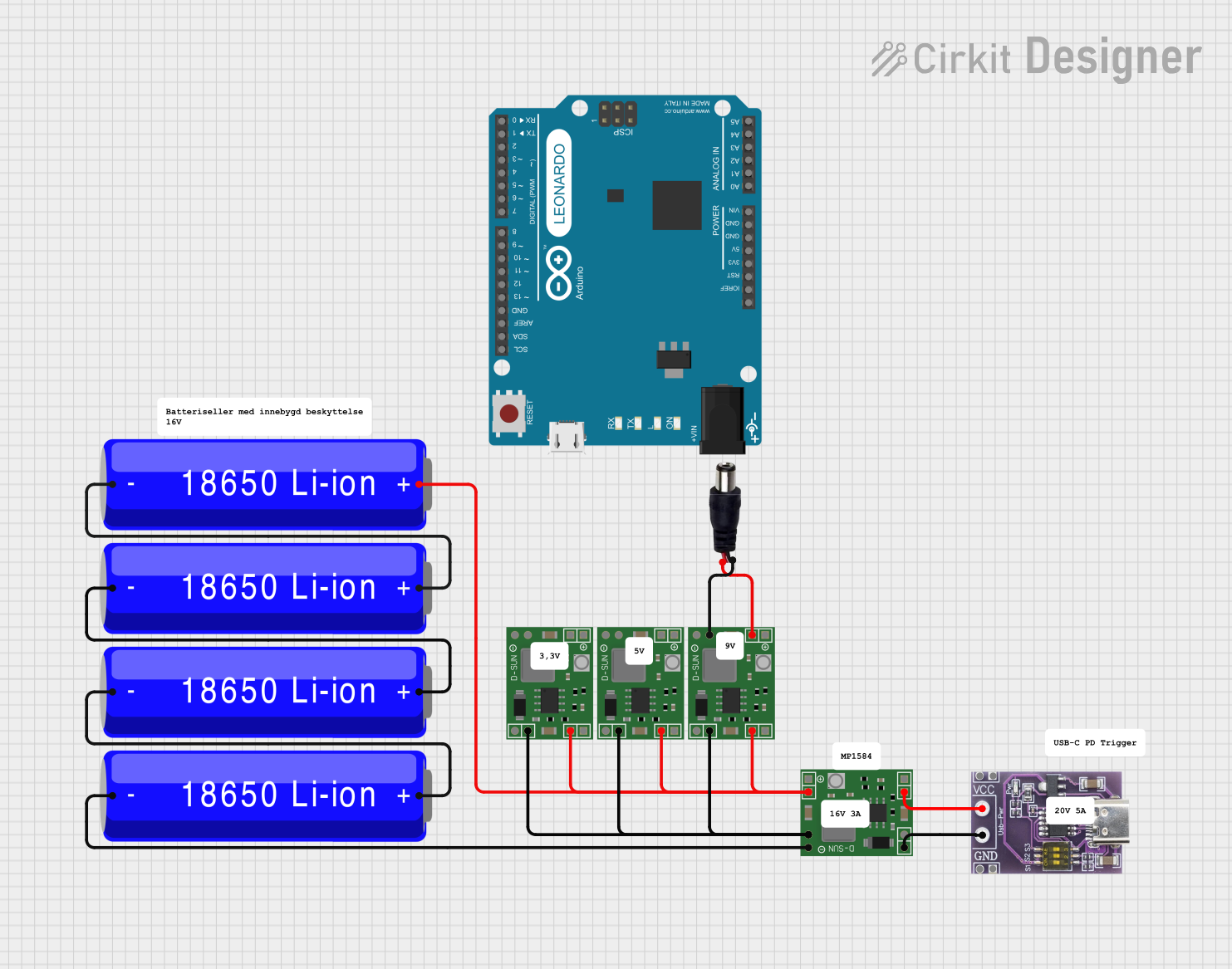
 Open Project in Cirkit Designer
Open Project in Cirkit Designer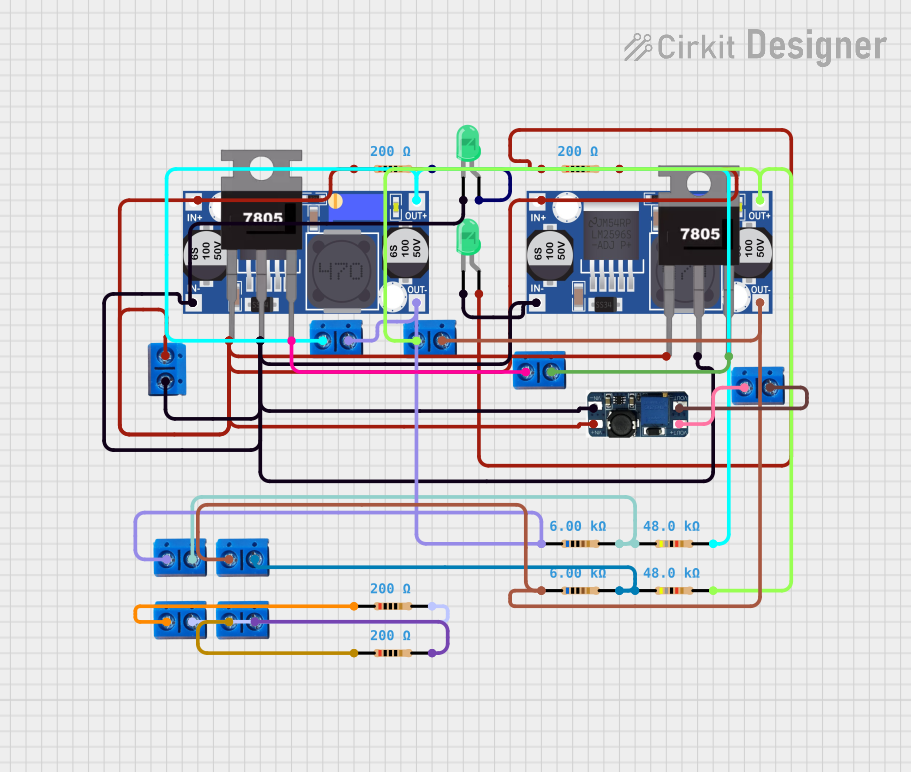
 Open Project in Cirkit Designer
Open Project in Cirkit Designer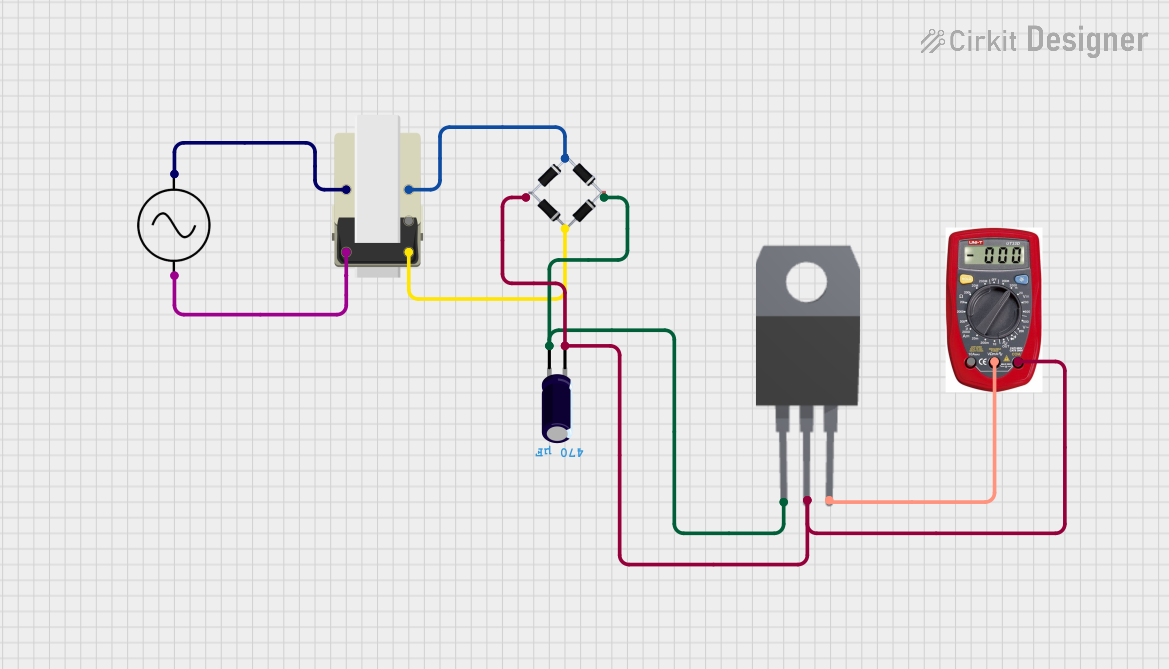
 Open Project in Cirkit Designer
Open Project in Cirkit Designer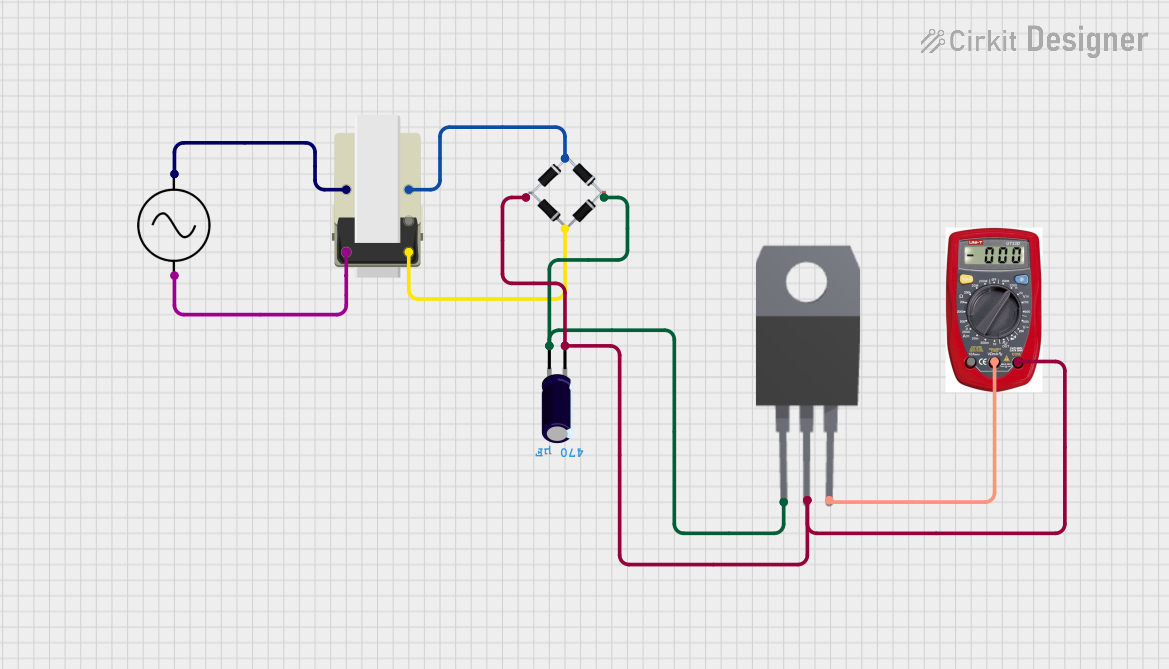
 Open Project in Cirkit Designer
Open Project in Cirkit DesignerExplore Projects Built with MP1584 power regulator

 Open Project in Cirkit Designer
Open Project in Cirkit Designer
 Open Project in Cirkit Designer
Open Project in Cirkit Designer
 Open Project in Cirkit Designer
Open Project in Cirkit Designer
 Open Project in Cirkit Designer
Open Project in Cirkit DesignerCommon Applications
- Powering microcontrollers and development boards (e.g., Arduino, Raspberry Pi)
- Battery-powered devices
- LED drivers
- Industrial control systems
- Consumer electronics
Technical Specifications
The MP1584 power regulator is a robust and efficient component with the following key specifications:
| Parameter | Value |
|---|---|
| Input Voltage Range | 4.5V to 28V |
| Output Voltage Range | 0.8V to 20V (adjustable via potentiometer) |
| Output Current | Up to 3A |
| Efficiency | Up to 92% |
| Switching Frequency | 100kHz to 1.5MHz |
| Operating Temperature | -40°C to +85°C |
| Protection Features | Overcurrent, thermal shutdown |
Pin Configuration and Descriptions
The MP1584 module typically has the following pinout:
| Pin Name | Description |
|---|---|
| VIN | Input voltage pin (connect to the power source) |
| VOUT | Output voltage pin (connect to the load) |
| GND | Ground pin (common ground for input and output) |
| EN | Enable pin (optional, used to enable/disable the module) |
Usage Instructions
How to Use the MP1584 in a Circuit
Connect the Input Voltage (VIN):
- Attach the positive terminal of your power source to the
VINpin. - Connect the negative terminal of your power source to the
GNDpin.
- Attach the positive terminal of your power source to the
Set the Desired Output Voltage:
- Use the onboard potentiometer to adjust the output voltage.
- Measure the output voltage across the
VOUTandGNDpins using a multimeter while adjusting the potentiometer.
Connect the Load:
- Attach the positive terminal of your load to the
VOUTpin. - Connect the negative terminal of your load to the
GNDpin.
- Attach the positive terminal of your load to the
Enable the Module (Optional):
- If the
ENpin is available, connect it to a high logic level (e.g., 3.3V or 5V) to enable the module. - To disable the module, connect the
ENpin to ground.
- If the
Important Considerations and Best Practices
- Input Voltage: Ensure the input voltage is within the specified range (4.5V to 28V).
- Output Voltage: Do not exceed the maximum output voltage of 20V.
- Heat Dissipation: For high current loads, consider adding a heatsink or improving airflow to prevent overheating.
- Capacitors: Use appropriate input and output capacitors to stabilize the voltage and reduce noise.
- Load Current: Do not exceed the maximum output current of 3A to avoid damage.
Example: Using MP1584 with Arduino UNO
The MP1584 can be used to power an Arduino UNO by stepping down a higher voltage (e.g., 12V) to 5V. Below is an example circuit and code:
Circuit Connections
- Connect a 12V power source to the
VINandGNDpins of the MP1584. - Adjust the potentiometer to set the output voltage to 5V.
- Connect the
VOUTpin of the MP1584 to the5Vpin of the Arduino UNO. - Connect the
GNDpin of the MP1584 to theGNDpin of the Arduino UNO.
Example Code
// Example code to blink an LED using Arduino UNO powered by MP1584
// Ensure the MP1584 output is set to 5V before connecting to the Arduino
const int ledPin = 13; // Built-in LED pin on Arduino UNO
void setup() {
pinMode(ledPin, OUTPUT); // Set LED pin as output
}
void loop() {
digitalWrite(ledPin, HIGH); // Turn the LED on
delay(1000); // Wait for 1 second
digitalWrite(ledPin, LOW); // Turn the LED off
delay(1000); // Wait for 1 second
}
Troubleshooting and FAQs
Common Issues and Solutions
No Output Voltage:
- Verify that the input voltage is within the specified range (4.5V to 28V).
- Check the
ENpin. Ensure it is connected to a high logic level or left floating.
Output Voltage is Incorrect:
- Adjust the potentiometer while monitoring the output voltage with a multimeter.
- Ensure the input voltage is at least 1V higher than the desired output voltage.
Overheating:
- Reduce the load current if it exceeds 3A.
- Improve heat dissipation by adding a heatsink or increasing airflow.
Module Not Working After High Load:
- Check for signs of damage due to overcurrent or overheating.
- Replace the module if necessary.
FAQs
Q: Can the MP1584 be used to power a Raspberry Pi?
A: Yes, the MP1584 can step down a higher voltage (e.g., 12V) to 5V to power a Raspberry Pi. Ensure the output voltage is precisely set to 5V and the current requirement does not exceed 3A.
Q: Is the MP1584 suitable for battery-powered applications?
A: Yes, the MP1584 is highly efficient and can be used in battery-powered devices to step down voltage while minimizing power loss.
Q: Can I use the MP1584 without the EN pin?
A: Yes, the module will operate normally if the EN pin is left floating or connected to a high logic level.
Q: How do I know if the module is overheating?
A: If the module becomes too hot to touch or shuts down unexpectedly, it may be overheating. Reduce the load or improve cooling.